Beautiful Trees with Heart Shaped Leaves: Top 12 Varieties
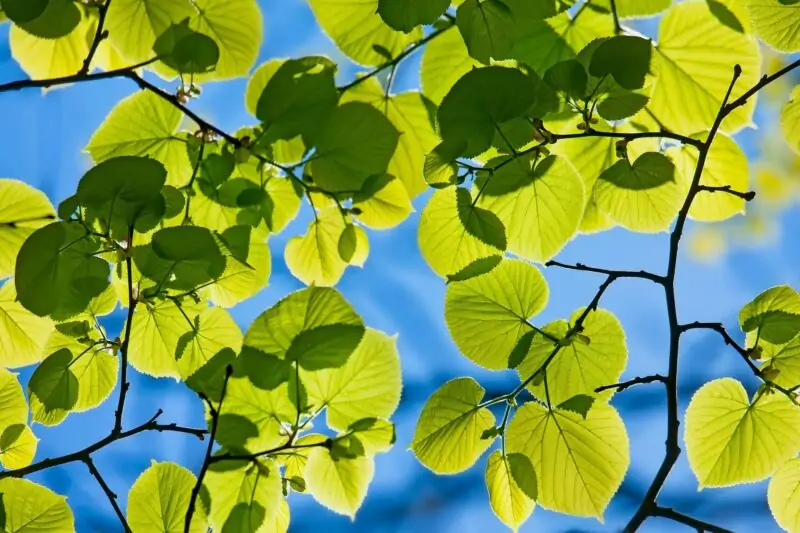
It’s rare to see trees with heart shaped leaves, but they exist. These trees are among the most fascinating and visually appealing plants out there because their leaves take the shape of a human heart. It’s something you rarely see, and this adds to their charm and beauty.
More than this, they are popular among landscapers or gardeners who want to add decoration to their landscape, whether it’s a small garden or a large park. The simple reason is that aside from their aesthetic appeal, these plants are eco-friendly, and their colorful leaves make decorating your outdoor environment effortless.
If you are looking for a unique way to add an attractive ornament to your outdoor environment with a heart-shaped tree, but don’t know which type to choose, in this article, you will discover some of the most popular varieties to help you give your home that natural allure that makes it stand out. So, what are the trees with heart-shaped leaves?
1. Lime (Tilia spp.): Best-Known Tree with Heart Shaped Leaves
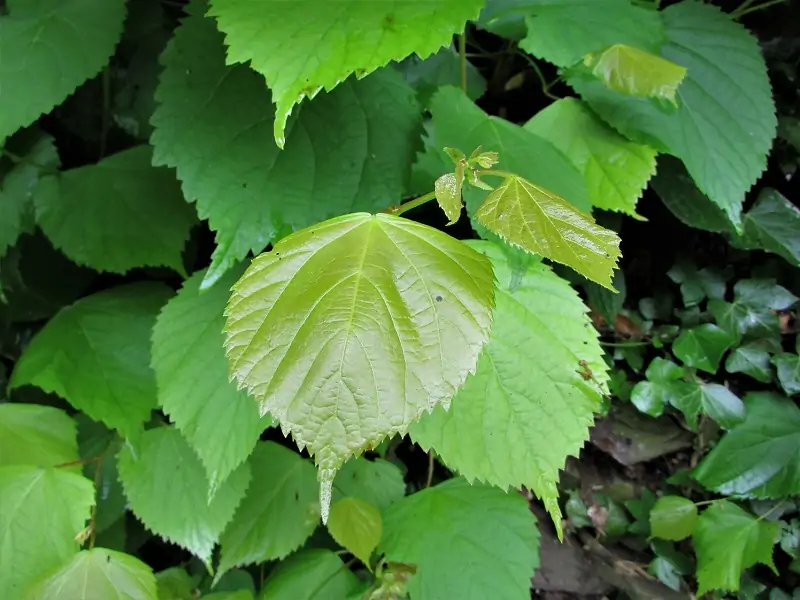
This tree is also known as the Linden tree. It is a deciduous tree that belongs to the Tiliaceae family, and if you live in Europe and North America, then you can easily find this tree around you.
Most trees with big heart-shaped leaves can only grow up to 60 or 70 feet tall, but this one has a 10 feet advantage over others, and with foliage growing up to 5 inches long and 4 inches wide, this tree is relatively large compared to many. It also has a broad, rounded crown with a straight trunk that is grayish-brown in color, and the leaves are vibrant green. But, you need to plant them in well-draining soil to ensure the best growing conditions.
2. Caucasian Lime (Tilia Dasystyla)
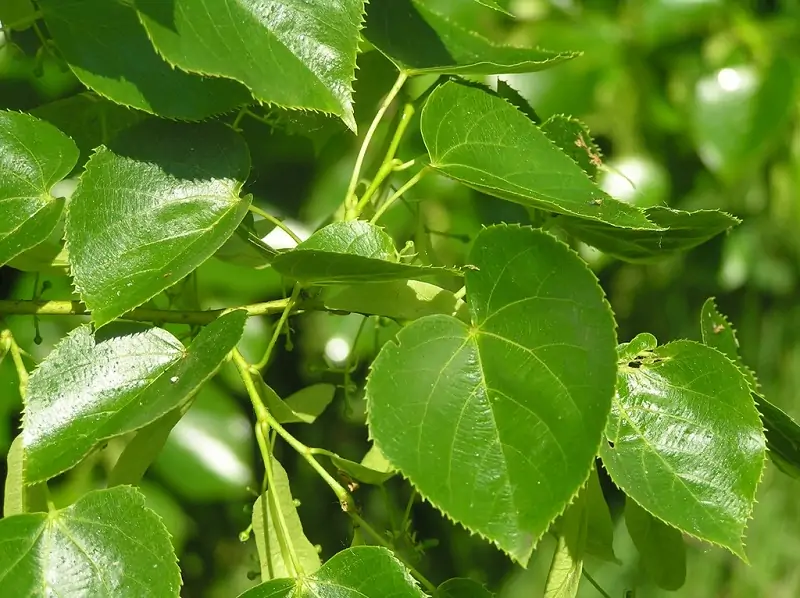
The Caucasian lime is another variation of the lime tree. It is a beauty that can grow up to 80 feet tall and 60 feet wide, like the typical lime shrub. Regardless, the difference between both is that this variant has longer oval-shaped flowers and their length can often reach up to 8 inches long.
3. Empress Tree (Paulownia Elongata or Paulownia Fortunei)
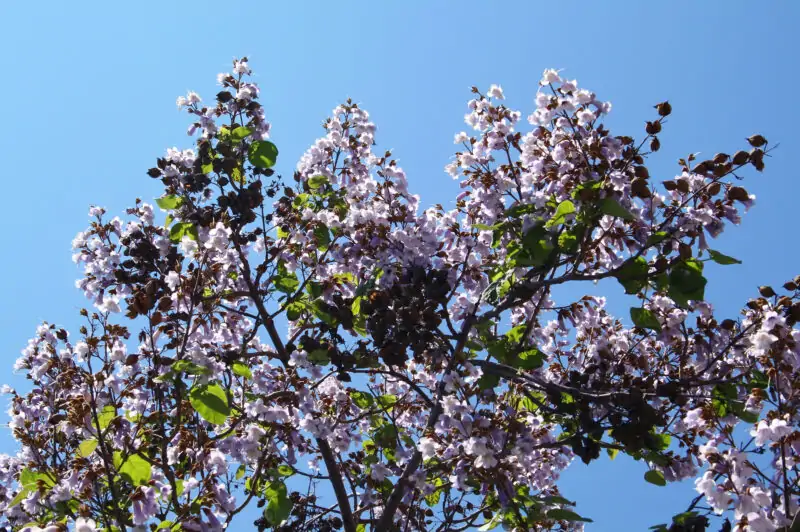
Most people get confused when they see the empress and foxglove trees in the same setting because they belong to the same family of flowering plants, the Paulowniaceae family. Both plants have large, heart-shaped flowers but differ in size and color.
For instance, the flowers on empress trees can grow up to 16 inches (40 cm) wide and 20 inches (50 cm) long, making them one of the largest among other members of the Paulowniaceae family in North America. They also produce one of the rarest flower colors (a beautiful lavender or purple flower) during spring.
4. Silver Linden (Tilia Tomentosa)
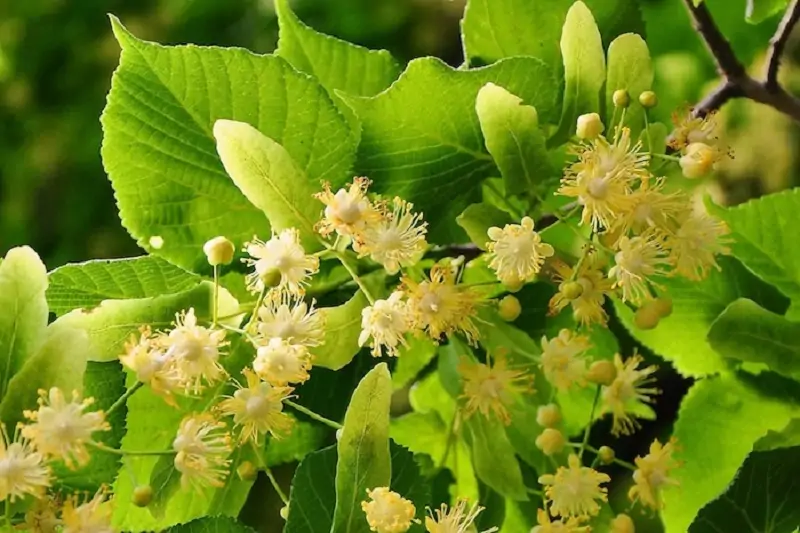
People also know this tree as the Silver Lime. It is native to Europe and Western Asia and looks like a pyramid when young transforms into an oval shape as it matures. Gardeners who have grown this tree say they can grow up to 80 feet, and they produce bright green foliage that can grow between 3 inches long and 6 inches wide. You also won’t have to spend time finding the perfect soil for it because they can tolerate any soil type.
5. Northern Catalpa (Catalpa Speciosa)
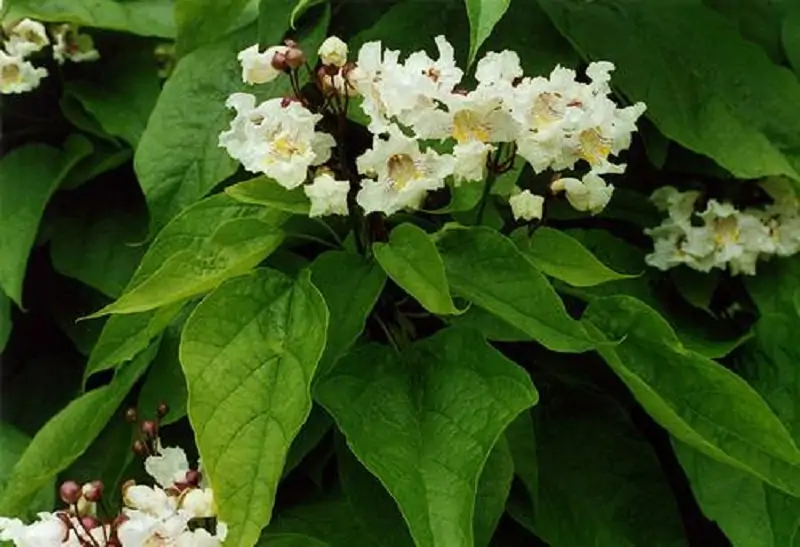
Are there large trees with heart-shaped leaves and trumpet flowers? Yes, there are quite a few of them, and the Northern Catalpa is a good example.
You may hear people refer to this plant as the Indian Bean tree. It belongs to the Bignoniaceae family and is native to the eastern United States. It usually produces bright green-colored shrubs that can grow up to a foot long.
When it matures, it reaches about 60 to 70 feet long and 50 feet wide. With a size like this, you can be rest assured of plenty of canopy space, so you won’t have to worry about sunlight or heat.
6. Quaking Aspen (Populus Tremuloides)
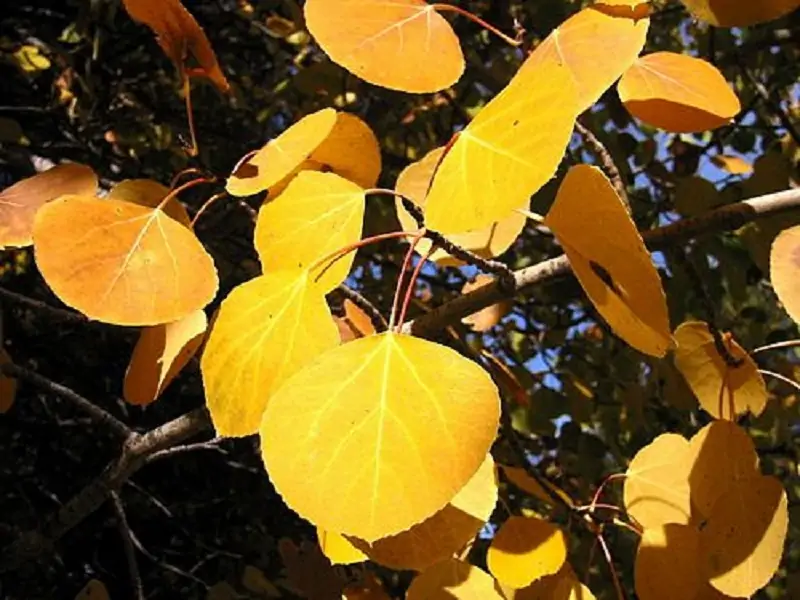
Quaking Aspen does not technically have a heart-shaped leaf, but we can classify them to this list because they have rounded and almost circular leaves, typically 1.5 to 3 inches in diameter, and when they quake, they look like a heart. And like most large deciduous plants, they can grow up to 80 feet with yellow blossoms. The best part is they are hardy and adaptable. Hence, you won’t have to worry about which type of soil to use for this flowering plant.
7. Southern Catalpa (Catalpa Bignonioides): A Small Tree with Heart-Shaped Leaves
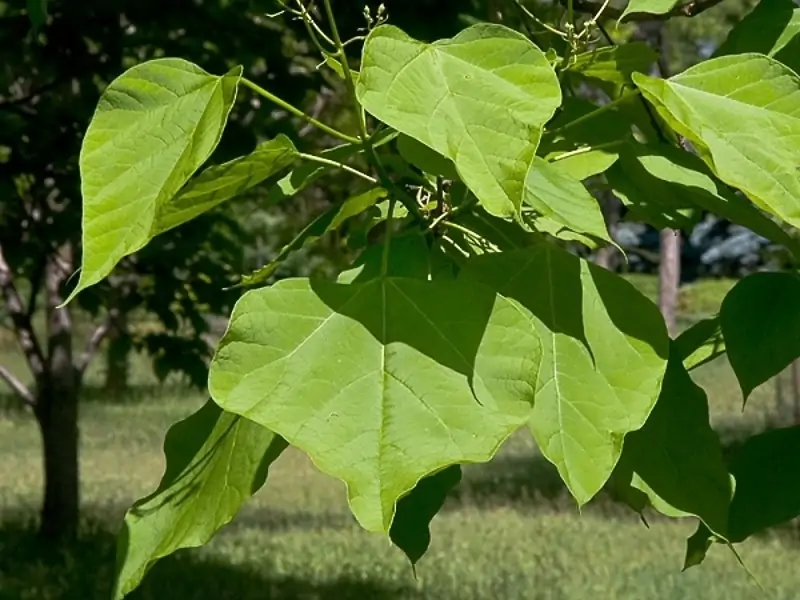
Large heart-shaped trees are beautiful, but that does not mean the small ones won’t suit your taste. Here and below are some beautiful plants with stunning heart-shaped foliage you can consider for your outdoors.
You’re probably wondering why we mention Catalpa again when we’ve discussed the Northern Catalpa. It’s because they are different. This variety is native to the Southern US and smaller than the Northern Catalpa. It only grows up to 40 feet even in maturity, but it retains the light-green color of its Northern variant, and the leaf is slightly veiny.
8. Redbud (Cercis Canadensis)
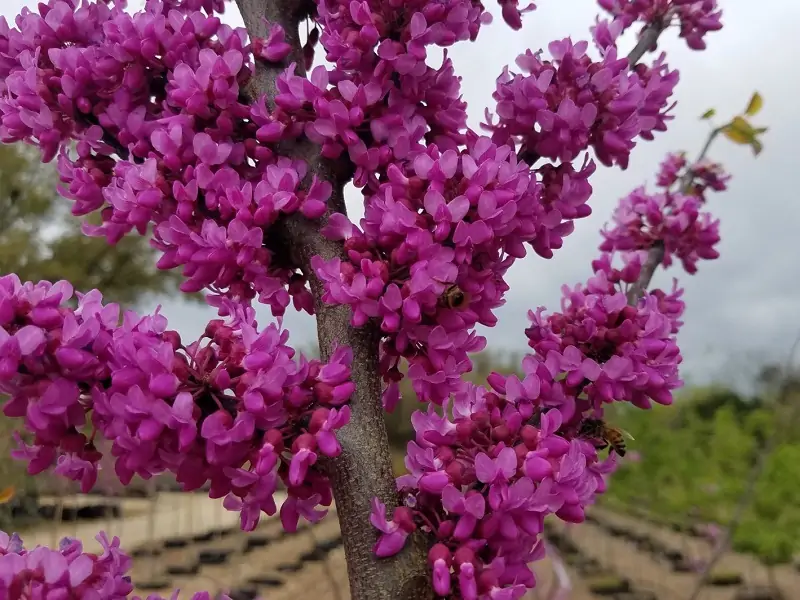
Redbud trees have heart-shaped leaves, but there are so many variants that you might get confused when you see them. Plus, most of them have pink, purple, or magenta colors. What differentiates this variety from others is its size and color.
The Redbud is small and native to North America. It can grow up to 30 feet tall, and the leaves are a deep shade of green, but in spring, its flowers turn pink or purple.
9. Foxglove Tree (Paulownia Tomentosa)
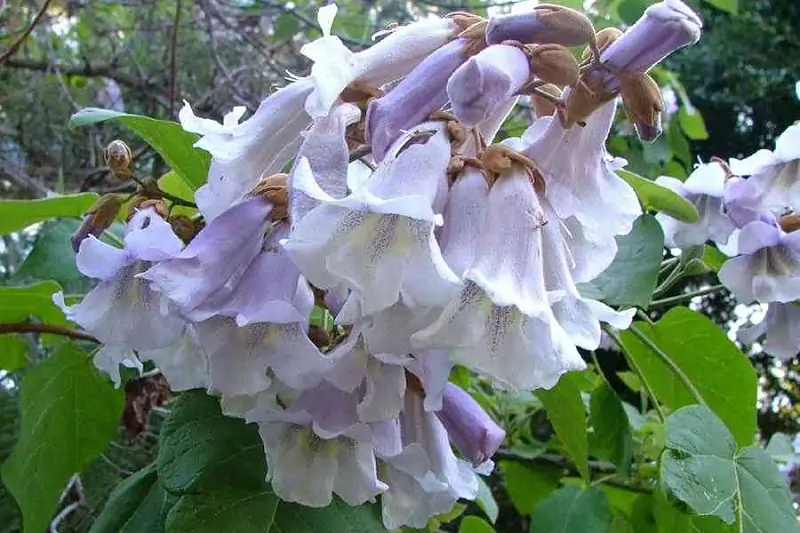
Unlike other flowering trees from the Paulowniaceae family, the Foxglove tree is native to Central and Western Europe. If you’ve seen it from your screen – probably browsed the image online, one thing you should know is it is smaller than you think. It typically grows to around 30 feet tall and has unique white bell-shaped flowers that often appear pink or purple.
10. White Mulberry (Morus Alba)
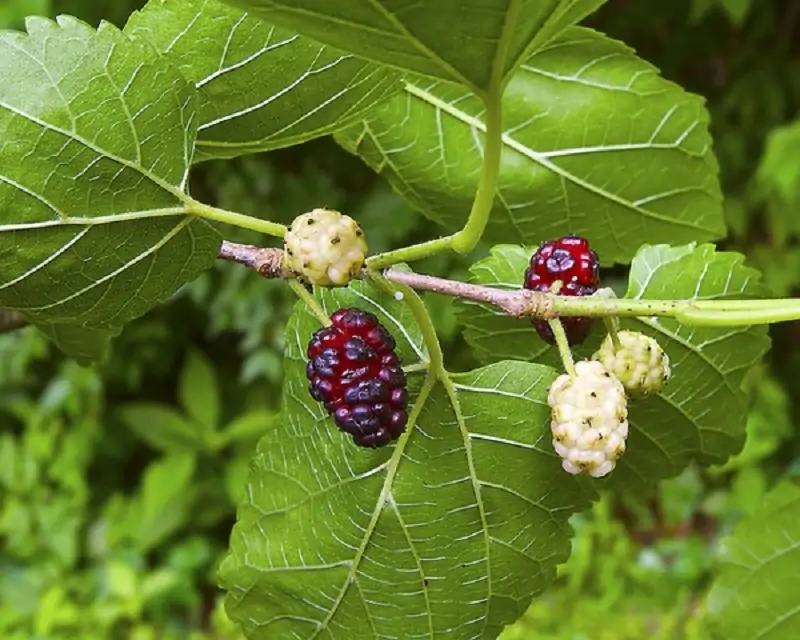
This plant is native to China, but you can cultivate it anywhere in the world. It’s not large, but also not small, because it boasts its height is about 50 feet. Unlike most heart-shaped trees with colorful leaves, this deciduous shrub has glossy green foliage, and the leaves can grow between 7 inches long to 5 inches wide. The White Mulberry produces a mixture of long slender, short, and more rounded flowers in the spring when planted in slightly acidic and well-drained soil.
11. Eastern Redbud (Cercis Canadensis var. texensis)
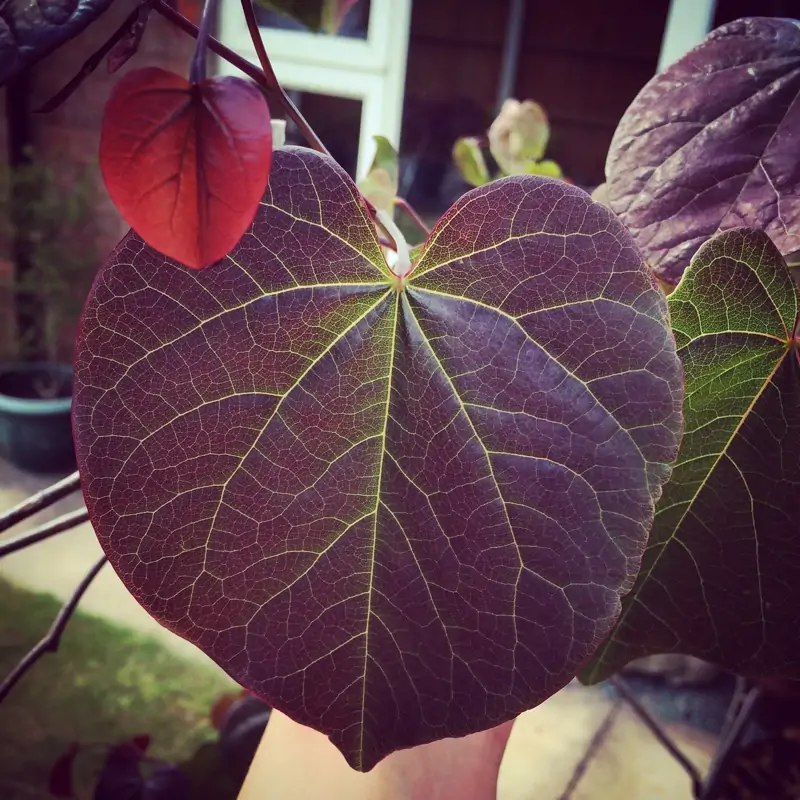
The Eastern Redbud tree belongs to the Redbud family and is native to Eastern North America, like most of its variants. Now, you would think that since it is called “Redbud,” it would produce red leaves, but it doesn’t – well, not at first, though. Instead, it blooms into stunning pink or purple colored flowers in the early spring, and its leaves turn a beautiful shade of red in the fall.
More than this, the Eastern Redbud typically grows to a height between 20 and 30 feet tall and wide. This means you can use this tree with heart-shaped red leaves for smaller landscapes.
12. Italian Alder (Alnus Cordata)
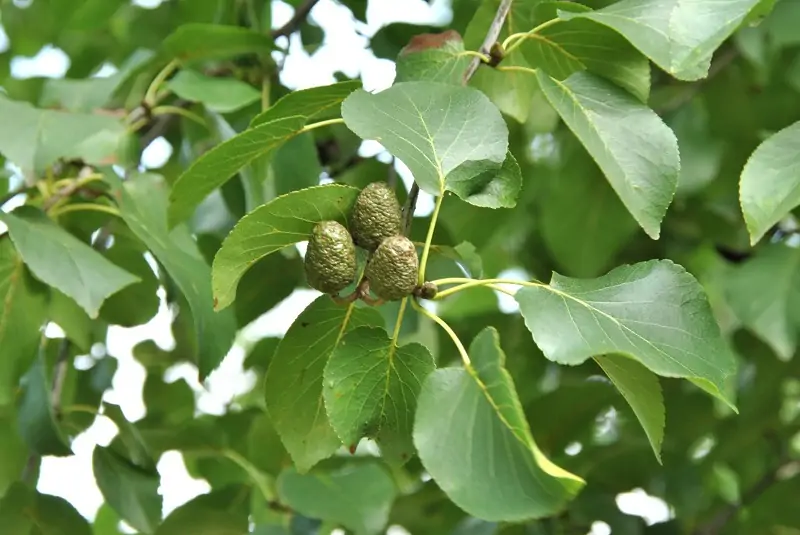
Popularly grown in Italy, this tree is medium-sized and can grow up to 50 feet tall and 40 feet wide. It has a rounded, dense crown and a straight trunk that can grow up to 2 feet in diameter with a moderate growth rate of about 20 to 30 years. Still, the leaf is the most distinctive feature of this flowering plant as they have a size between 4 inches long and 3 inches wide.
Unlike the Eastern Catalpa trumpet flower, you can expect to see cone-shaped flowers that grow in clusters and dark green leaves with a glossy sheen on this tree. Besides this, they also grow well in areas with poor drainage.
Conclusion
Trees with heart shaped leaves are everywhere, but many people never consider them because they don’t know the value it adds to their landscape. From the vibrant green blossoms of the Lime tree to the fragrant Italian Alder tree, these trees are a sight to behold and a valuable asset to your ecosystem. So, if you’re considering giving your outdoors a facelift, watch out for these captivating trees with heart-shaped leaves since they are a unique addition to any garden space.